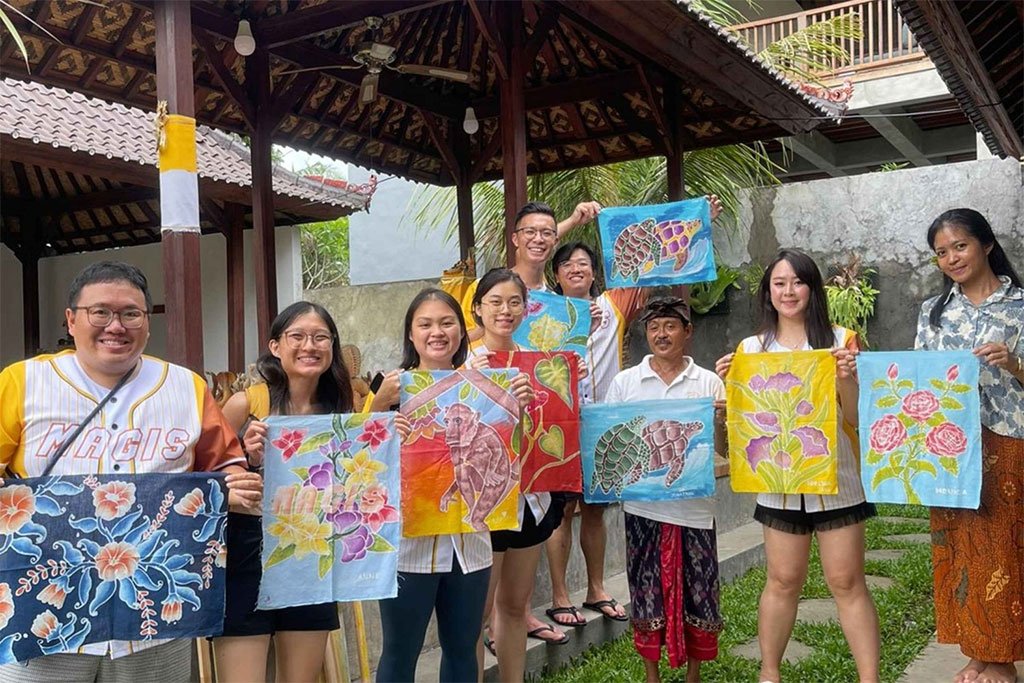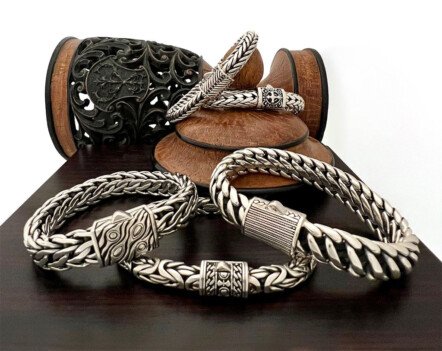Visiting Bali is like stepping into a vibrant tapestry of culture, craftsmanship, and creativity. From the neon buzz of Ubud’s art scene to the sandy simplicity of beach markets in Seminyak, the island is a treasure trove for collectors, gift-givers, and wanderlust souls. But amidst its bewitching charm, it’s easy to get lost in tourist traps and mass-produced goods.
This guide is your secret roadmap to discovering authentic, high-quality souvenirs—genuine Balinese creations crafted by local artisans, with soul, story, and cultural integrity.
🎨 Where to Shop: Hidden Gems and Local Favorites
1. Ubud Artisans’ Villages
Peliatan & Mas (Woodcarving Villages)
Nestled just outside Ubud, these villages specialize in intricately carved teak, sandalwood, and ebony sculptures—from delicate relief panels to traditional Barong masks. Visit small workshops early morning, observe artisans at work, and commission custom pieces. Go straight to “pangrawit” (master carvers) for the highest quality and fascinating ancestral stories.
Ketewel & Seseh (Stone Sculpture Villages)
For lovers of stone works, Ketewel and Seseh east of Denpasar are less frequented but offer a serene atmosphere and a wide selection of garden statues, temple adornments, and wind chimes—all carved from volcanic stone. Many places will allow you to haggle respectfully and learn about their symbolic meanings.
2. Seminyak & Canggu Boutiques
Beachfront Boutiques
In surf-chic areas like Seminyak and Canggu, minimalist galleries and boutique stores showcase modern takes on traditional art—think geometrical masks, hand-dyed ikat wall hangings, and monochrome batik tees. Prices are higher but the pieces often blend Balinese roots with contemporary style.
Pop-Up Markets & Sunday Farmers Markets
Canggu’s Sunday markets (e.g., at Desa Seni or Love Anchor) are vibrant hubs of handcrafted jewelry, leather goods, and organic body-care products. You’ll find raw gemstones, silver rings, driftwood accessories, and Bali-made essential oils in a casual, friendly vibe.
3. Uluwatu & Pecatu Beach Stalls
These southern headlands offer a more relaxed, spontaneous shopping experience. Beachfront stalls sell sea-glass jewelry, crochet beachwear, straw hats, and hand-painted boards under sunset skies. Chat with vendors about their sourcing—they often collect driftwood or sea shells just down the beach.
4. Besakih & Traditional Ceremonial Crafts
East Bali’s Besakih area isn’t just for temple pilgrims—artisans nearby specialize in ceremonial canang (offering trays), hand-beaded umbrellas, and gold-thread textile decorations made for temple festivals. These make colorful, meaningful souvenirs.
5. Denpasar Trade Market (Pasar Badung & Pasar Kumbasari)
Busy, bustling, and completely local—these large city markets are your go-to for batik, sarongs, silk scarves, Bali coffee beans, spices, herbal jams, and Balinese snacks like kluwak and lawar condiments. Be prepared to bargain. Pack a cloth bag and a calm spirit.
6. Sidemen Village Weavers
An hour from Ubud, Sidemen is where ikat—the art of resist-dye weaving—is still practiced by families in small communities. You can tour homes, watch the dyeing and loom process, and buy hand-loomed scarves, sashes, table runners, or textiles for sarongs. A truly personal purchase.
7. Nusa Lembongan & Ceningan Day Trips
These nearby islands have a laid-back artisan scene: seaweed-dye fabric makers, driftwood furniture builders, and shell-embedded resin products. Shops are small-scale but beautifully curated.
🛍️ Types of Authentic Souvenirs to Look For
• Woodcarvings
Masks, statues (Barong, Ganesh), relief panels, and functional wares. Each piece breathes Balinese mythology and craftsmanship.
• Stone & Volcanic Sculptures
Garden figures, temple elements, fountains. They double as outdoor decor and conversation pieces.
• Textiles & Ikat
Handwoven scarves, sarongs, table linens, waistbands, and home decor textiles with complex patterns and natural dyes.
• Batik & Tie-Dye Fabrics
Diverse in style—from classic hard-wax batik to tie-dyed shibori. Ideal as wall art, dolls’ dresses, or beachwear.
• Jewelry & Gemstones
Silver filigree, ethically sourced gemstones (citrine, garnet, jasper), sea-glass pieces—miniatures with story and sparkle.
• Natural Beauty Products
Hand-mixed essential oil blends, flower-infused soaps, rice-scrub balms—rooted in local ingredients like turmeric, frangipani, coconut milk.
• Ceremonial & Offering Items
Miniature umbrellas, tiny hand-beaded ribbon skirts, ornate boxes—perfect for friends or for your own spiritual space.
• Coffee, Tea & Spices
Single-origin Bali coffee (Kintamani volcano roast), vanilla pods, clove cigarettes (kretek) for smokers, cultural storable goods.
• Rattan, Bamboo & Seaweed Items
Beach bags, coasters, baskets, lanterns, placemats—eco-friendly and Instagram-ready.
💡 Insider Tips for Authentic Shopping
Seek the Maker
Ask questions: “Who made this?” Appreciate it, and you’ll usually get an enthusiastic story—350-year-old family tradition, a self-taught carver, someone turning ocean waste into art.
Go with Quality, Not Quantity
Handmade equals nuanced imperfections: slightly uneven edges, fingerprints in the dye, or tool marks in wood. That’s character—not defects.
Strike Up Conversations
Bali artisans love explaining their craft. Watch, ask, learn. You’ll walk away with not only a beautiful item but also its origin story.
Bargaining Etiquette
Respectful haggling is standard at Pasars and tourist markets. Start at ~50%-60% of the asking price and meet in the middle. But for village workshop visits or upscale boutiques, pay fair price and support livelihoods.
Understand Shipping
Large sculptures or textiles? Many workshops can arrange shipping. A bit pricier, but you avoid lugging heavy items. Always inspect packaging capabilities and insurance.
Know Export Regulations
Extra-large wooden statues may require export permits. Always ask shops if they handle legal export, or stick to smaller items to avoid hassle.
Support Ethical & Eco-Friendly Practices
Look out for recycled materials (sea glass, driftwood), organic dyes, fair-trade cooperatives—Bali locals appreciate this awareness.
Time Your Visits
Workshops are open mid-morning to mid-afternoon. Markets are best early (6–10 AM) or late afternoon (4–7 PM) when it’s cooler and livelier.
Attend Local Art Fairs & Exhibitions
Ubud Art Market, Galungan and Kuningan Festival crafts fairs, or annual events like Bali Art Festival in June–July. Central place to discover rising artisans or unusual items.
🌍 Suggested Itineraries for Memorable Shopping Days
Ubud Artisan Day
- 08:00 Coffee & nasi campur breakfast
- 09:00 Visit Mas (woodcarving) → Ketewel (stone carving)
- 12:00 Lunch in workshop setting overlooking rice fields
- 13:00 Sidemen or handmade textile stop
- 15:00 Walk through Ubud market (Pasar Ubud)
- 16:30 Enjoy refreshment at a café near Ubud palace
Seminyak–Canggu Boho Trip
- 09:00 Yoga or surf class to start the day
- 10:30 Pop-up markets (Desa Seni or Love Anchor)
- 13:00 Lunch at a surf café
- 14:00 Boutique browsing in Seminyak
- 16:00 Beach stall browsing at sunset
Village & Beach Adventure
- 08:00 Breakfast near Padangbai
- 09:00 Visit Besakih artisans (offerings, ceremonial crafts)
- 11:00 Wander through Ceningan’s driftwood shops
- 12:30 Lunch by the sea
- 14:00 Snorkel or beach walk
- 15:30 Browse Lembongan boutiques
💸 Pricing Cheat Sheet (2025 Estimate)
| Souvenir |
Village Market (IDR) |
Boutique/Gallery (IDR) |
Converted USD |
| Small Wood Figurine |
50 k–150 k |
200 k–800 k |
$3.30–$53 USD |
| Batik/Ikat Scarf |
100 k–300 k |
350 k–1 000 k |
$6.50–$66 USD |
| Silver Ring (Gem) |
150 k–500 k |
600 k–2 000 k |
$10–$132 USD |
| Essential Oils Set |
100 k–400 k |
450 k–1 200 k |
$7–$80 USD |
| Ceremonial Offering |
30 k–100 k |
120 k–400 k |
$2–$26 USD |
| Garden Statue (SM) |
250 k–700 k |
800 k–2 500 k |
$13–$165 USD |
IDR = Indonesian Rupiah; estimate as of mid‑2025
🧳 Packing & Shipping Forward
- Carry-On Friendly Items: Scarves, jewelry, oils, spice jars—no worries at security.
- Wrapped Items: Request bubble wrap and padded packaging. Roll batik and textiles, don’t fold.
- Checked Baggage: Wood/tabletop & stone items packed well—declare if necessary.
- Workshops with Shipping: Many facilitators will pack, insure, and ship within a week. Just pay postage.
- Customs: Declare large statues if asked. For items under ~$500 USD value, it’s rarely a problem.
🧭 Final Advice
- Go Early & Locally – Beat the midday crowd and the heat.
- Bring Cash – ATM limits vary; bring enough for markets.
- Stay Curious – Ask about the craft’s origin, materials, age-old process, or myth behind the design.
- Respect Culture – Batik patterns or offerings carry spiritual significance. Treat respectfully.
- Savor the Experience – It’s not just what you buy—it’s the journey, the people, the stories you’re taking home.
🗝️ Why “Authentic Bali” Matters
Mass-produced tourist souvenirs often lack context, sustainability, and emotional connection. Real Balinese crafts preserve endangered traditions, support remote households, and give you something deeply personal. Every mask or hand-loomed textile is a narrative of skill and heritage. And when you proudly display or gift it, you’re spreading the story of Bali’s vibrant living culture.
✅ Quick Checklist Before You Go
🏁 Conclusion
Bali’s shopping scene transcends mere transactions. It’s a living, breathing celebration of craft: the tap of a chisel, the rhythm of a shuttle weaving silk threads, the fragrance of a hand-poured oil balm. So go wander its villages, markets, and beaches not just to buy—but to connect, to learn, and to take home a piece of Balinese heart. In doing so, you become more than a tourist—you become woven into Bali’s story.
Happy exploring—and selamat berbelanja! 🌺









